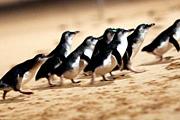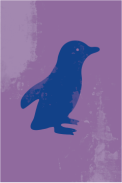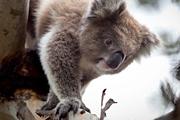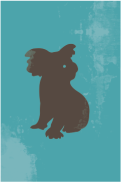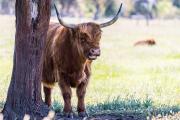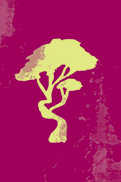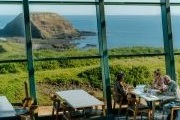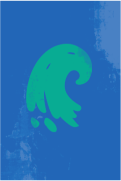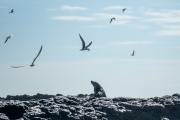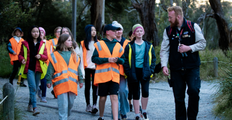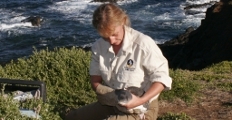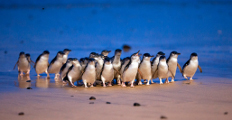|
Take care when driving on Phillip Island especially at dawn, dusk and at night when wildlife is most active. To report injured wildlife, call Wildlife Victoria on (03) 8400 7300. Phillip Island is a wonderful place to explore. For your safety, please pay attention to signage and regulations. Stay away from cliff edges and the base of coastal cliffs (do not sit or stand within 10 metres). |
About Cape Woolamai
Phillip Island’s highest point offers stunning coastal scenery, including views over the golden beach of Cape Woolamai, one of the island’s popular surfing spots. For the adventurous, a series of walking tracks reveal breathtaking views of cliffs carved by wind and waves.
Cultural significance
Cape Woolamai is important to First Peoples who for many thousands of years have visited these dunes, especially during the summer months, feeding on shellfish, Short-tailed shearwaters, eggs, and fish.
Ancient middens, made up of shells, bones, and charcoal, have been found in this area, and are protected, cultural sites.
Cape Woolamai walks
Cape Woolamai walks range from 4 to 8 kilometres.
What to take: Cape Woolamai is exposed and can experience severe weather changes. Bring water and appropriate clothing. Trails are well formed, and sign posted, however some bushwalking experience is recommended. Expect a slight but steady incline, with occasional steps and an uneven track surface in some places. Walks may be impassable on very high tides. Be aware of snakes in warm weather and steep cliffs adjacent to tracks - stay to paths at all times.
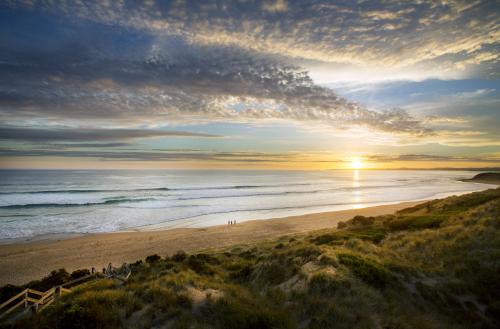
Pinnacles return
Take in the coastal views, including the rock formations known as the Pinnacles, one of the island’s most popular walks.
Walk down the ramp onto the beach and head left for approximately 900m to the staircase. Climb the stairs and follow the trail along the cliffs to the Pinnacles.
4.4kms, 2hrs return: easy/moderate
Quarry loop*
Relax in the tranquil cove that was a busy granite quarry in the late 1800s. This walk provides excellent views of wildlife and San Remo beaches.
Walk 100m back along the road and follow the marked trail to Cleeland Bight through the coastal scrub and banksia woodland. Turn right at the beach and continue until you reach the quarry. Loop back to the car park by following the track inland and turning right at the junction.
4.9kms, 2.5hrs, return: moderate
Beacon loop
Located at the highest point on Phillip Island (112m), the beacon lookout provides 360-degree views of the island, San Remo and, on clear days, to Wilsons Promontory.
Walk down the ramp onto the beach and head left for approximately 900m to the
staircase. Climb the stairs and follow the trail along the cliffs to the Pinnacles and beacon. Continue along the track through the banksia woodland to loop back to the car park.
7.2kms loop, 4hrs return: moderate
Cape Woolamai circuit*
Combine all of Cape Woolamai’s walks for great coastal views, wildlife viewing and the tranquility of the quarry cove.
Walk down the ramp onto the beach and head left for approximately 900m to the staircase. Climb the stairs and follow the trail along the cliffs to the Pinnacles and then onto the beacon track. Continue along the track and turn right at the junction to the quarry. Walk left along Cleeland Bight and return to the road and car park via the track through the coastal scrub.
8.1kms, 4.5hrs return (pack a lunch): moderate
* Cleeland Bight May be impassable on very high tide. Check tide times HERE.
Download map HERE
Wildlife returns
Farming activities over 100 years ago destabilised dunes and destroyed vegetation communities in this area. One of Victoria’s largest revegetation programs occurred here in the 1970s and 80s. Today Phillip Island Nature Parks continues this work. As a result many wildlife species have returned to the area.
Hooded plovers
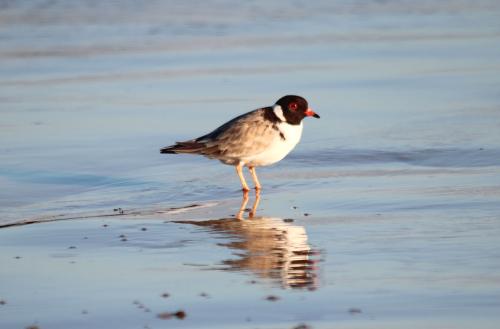
Hooded plovers are small birds which spend their entire lives on our beaches. They make their nests along the high tide line or in the sand dunes. Hooded plovers are locally endangered as breeding success is low due to disturbance by dogs and people. You can help by walking along the water’s edge and keeping clear of roped off areas.
Short-tailed shearwaters
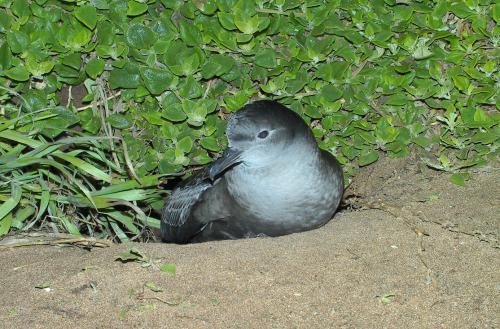
Cape Woolamai is home to approximately half a million Short-tailed shearwaters. The shearwaters arrive at Cape Woolamai in late September after a 16,000 km migration from the Aleutian Islands near Alaska. Phillip Island Nature Parks coordinates the Shearwater Rescue Program. Each April the program monitors roadways to assist birds beginning the return migration to the northern hemisphere. Fledglings that stray onto roads are relocated to safe areas of the colony to migrate successfully.
Whales of Western Port
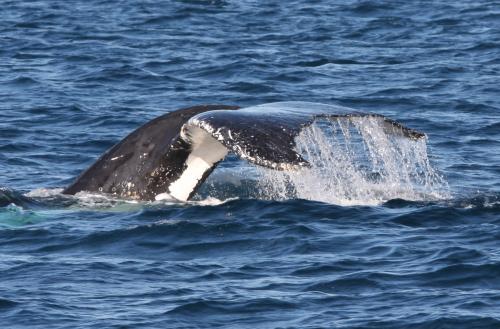
From late May to early July, humpbacks, southern right, and killer whales migrate north from the cool Antarctic waters. Whales can be seen in this area as they make their way to Queensland’s warm waters to calve.
Our Shy Snakes
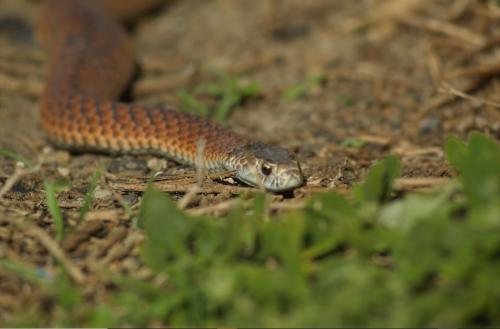
Copperhead snakes are the only species of snake found on Phillip Island. Their colouring ranges from coppery brown, light reddish brown to a grey or light brown. They are venomous with no specific anti-venom. If you see a copperhead snake please respect it by leaving it alone.





